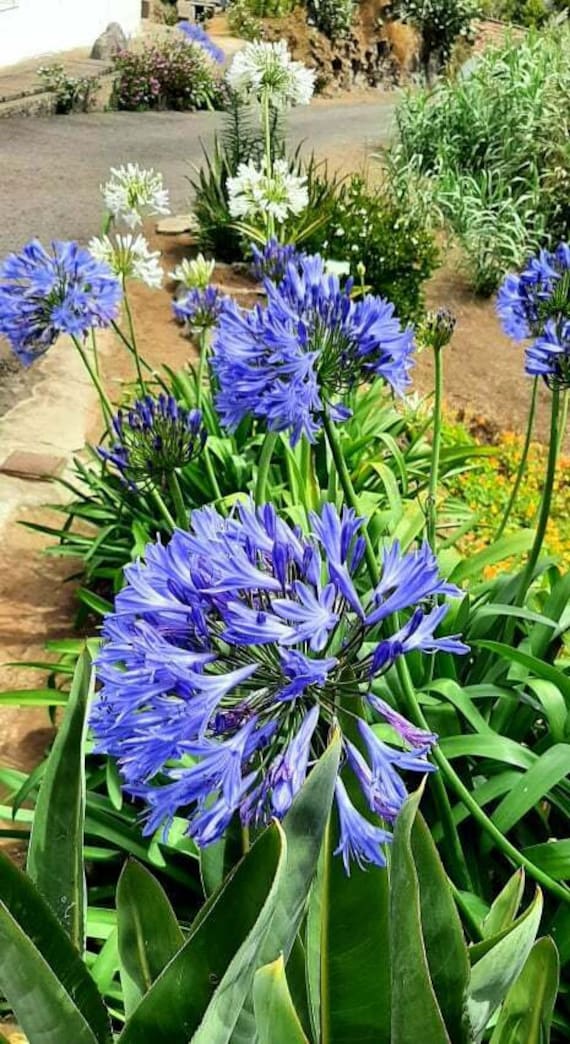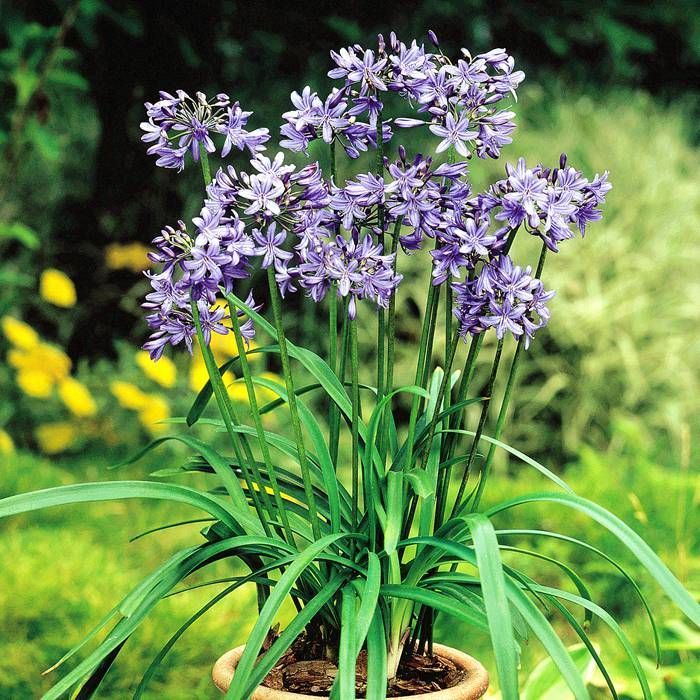Exactly how to Plant and Maintain Agapanthus in Your Yard
Exactly how to Plant and Maintain Agapanthus in Your Yard
Blog Article
Unleashing the Secret to Effective Agapanthus Growing: Advice for a Flourishing Yard
In the realm of gardening, cultivating agapanthus efficiently needs a critical approach that encompasses numerous facets of plant care. By comprehending the subtleties of agapanthus cultivation, one can create an environment where these plants prosper and bloom generously.
Growing Agapanthus: Ideal Practices
When growing Agapanthus, proper soil prep work is essential for making sure successful growth and advancement of these lovely blossoms. Agapanthus, commonly called Lily of the Nile or African lily, prospers in well-draining dirt with a slightly acidic to neutral pH degree - Agapanthus. Prior to growing, it is critical to amend heavy clay soils with raw material such as garden compost or peat moss to enhance drain and supply crucial nutrients for the plants
To grow Agapanthus, pick an area that obtains complete sunshine to partial color, as this will certainly promote healthy growth and abundant flowering. Dig an opening two times the size of the plant's origin sphere and put the Agapanthus at the exact same deepness it was previously growing. Delicately backfill the opening with dirt, pushing down securely to eliminate any type of air pockets around the roots.
Water the newly grown Agapanthus extensively and proceed to maintain the soil evenly moist, especially throughout the plant's energetic growing season. Agapanthus. Applying a well balanced plant food once a month can additionally support the plant's growth and blooming. By adhering to these finest methods for planting Agapanthus, you can create a stunning display screen of these fascinating flowers in your yard
Suitable Soil Conditions for Agapanthus
For optimal development and blooming success of Agapanthus plants, making certain the soil problems are optimal is crucial. Agapanthus favors dirt that is rich in nutrients, so including a balanced plant food during the expanding season can advertise healthy and balanced growth and vivid flowers.

Watering and Fertilizing Tips
To make sure healthy and balanced development and vivid blossoms, correct watering and fertilizing techniques are important for successful Agapanthus growing. Agapanthus plants take advantage of routine watering, particularly during the growing season. It is recommended to water deeply once a week, guaranteeing the soil is moist but not waterlogged. During warm climate or in pots, even more constant watering might be necessary to stop the dirt from drying totally.
When it involves feeding Agapanthus, a balanced fertilizer with equivalent components nitrogen, phosphorus, and potassium can be applied in the springtime to advertise healthy development and blooming. Slow-release fertilizers are excellent for supplying nutrients slowly over an browse around this web-site extended duration. Avoid over-fertilizing, as this can bring about extreme vegetation development at the cost of blossoms.
Furthermore, incorporating natural matter like garden compost into the dirt can improve nutrient levels and boost soil framework, helping in the overall wellness of the Agapanthus plants. By following these watering and feeding ideas, gardeners can guarantee their Agapanthus plants flourish and generate spectacular display screens of flowers.
Pruning and Deadheading Methods
Correct pruning and deadheading methods play a vital role in maintaining the health and visual appeals of Agapanthus plants, matching the essential techniques of watering and fertilizing for successful farming. Trimming Agapanthus includes removing spent blossom heads, dead or yellowing leaves, and total shaping of the plant to advertise far better growth. Deadheading, the process of getting rid of discolored blossoms, not just boosts the plant's appearance but likewise motivates additional growing.
When deadheading Agapanthus, it is advisable to snip off the flower stem at the base utilizing sharp, tidy shears. This process redirects the plant's energy from seed production back right into origin and vegetation growth, promoting a much healthier and more robust plant. Normal deadheading can extend the flowering duration of Agapanthus and prevent self-seeding, which can result in congestion.
In terms of pruning, Agapanthus usually gain from a light trim after blossoming to clean up the plant and urge fresh growth. Cutting down the invested flower stems and eliminating any type of broken or dead vegetation helps preserve the plant's vigor and general appearance. Nevertheless, it is necessary to stay clear of reducing into the crown of the plant, as this can find out here now compromise its health.

Protecting Agapanthus From Vermins and Diseases
Applying efficient pest and illness management methods is essential to guarding the health and vitality of Agapanthus plants in farming. One usual insect that impacts Agapanthus is the Agapanthus borer, a caterpillar that passages into the plant, creating damages to the flowers and leaves.
In addition to bugs, Agapanthus are at risk to diseases such as root rot and fungal fallen leave places. By staying attentive and resolving parasite and condition concerns immediately, garden enthusiasts can help their Agapanthus prosper and thrive.

Verdict
To conclude, successful cultivation of agapanthus requires proper planting have a peek at this site strategies, optimal dirt conditions, appropriate watering and feeding, normal pruning and deadheading, and security from illness and insects. By complying with these methods and suggestions, garden enthusiasts can make certain a prospering yard filled up with lovely agapanthus flowers. Agapanthus. Keep in mind to maintain constant treatment and attention to information to promote the health and durability of these spectacular plants
When growing Agapanthus, correct dirt preparation is vital for making certain successful growth and advancement of these lovely flowers.Water the freshly planted Agapanthus extensively and proceed to keep the soil equally wet, especially during the plant's active expanding period.For optimal growth and flowering success of Agapanthus plants, guaranteeing the soil problems are perfect is vital. When growing or transplanting Agapanthus, guarantee the soil is well-prepared to supply the required foundation for the plants to develop themselves efficiently. One common insect that impacts Agapanthus is the Agapanthus borer, a caterpillar that tunnels into the plant, triggering damages to the blossoms and fallen leaves.
Report this page